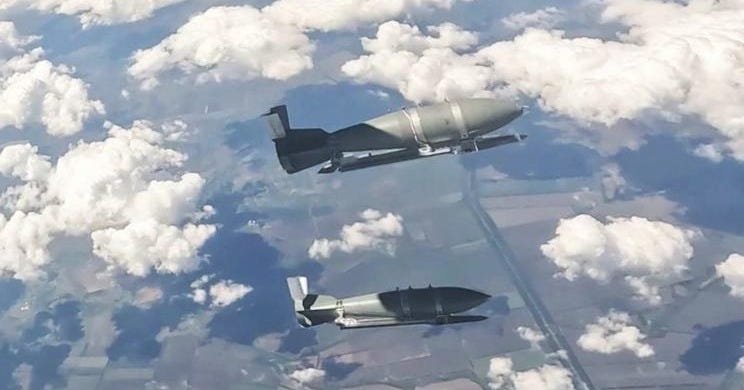One Long-Term Strategy Could Stop Russia's Glide Bombs.
As many as 5,000 Russian glide bombs rain down on Ukraine every month. How can the Ukrainians slow the lethal rain?

Russia blasts Ukraine with thousands of glide bombs every month
The bombs are difficult to defeat
To suppress the bombardment over the long term, Ukraine could target the Russian aerospace industry
Tighter sanctions and drone strikes could disrupt production of new jets
The Russian air force is lobbing as many as 5,000 glide bombs at Ukrainian positions every month, including some bombs weighing 3,000 kg. Just one of those aerial monsters is powerful enough to flatten a high-rise building.
The glide bombs blast holes in Ukrainian defenses, disrupt military logistics, and terrorize everyday Ukrainians living near the front line, leveling entire apartment buildings in one go.
In the battle for Pokrovsk, Russian forces drop up to 450 glide bombs per week on a single sector, destroying fortified strongpoints that Ukrainian forces spent months building—and allowing Russian infiltration. One FAB-3000 bomb can completely obliterate a fortified position, turning Ukrainian defensive networks into rubble and forcing troops into open fields where they become easier targets.
There are measures Ukrainian forces can take to blunt the relentless bombardment—but none are cheap. And some could take months if not years to have any meaningful effect.
Recent footage from the front line in Myrnohrad, in eastern Ukraine’s Donetsk Oblast, dramatically illustrates the power of Russia’s glide bombs, which range as far as 65 km on pop-out wings and satellite guidance. Russian industry developed the glide bomb kits in early 2023 in response to heavy Russian air force losses during close bombing sorties.
The recent footage depicts a 1,500-kg or 3,000-kg glide bomb striking a multi-story building—and demolishing it.
“Glide bombs are a truly terrifying weapon,” Canadian journalist Neil Hauer explained. He recalled a story about 3,000-kg glide bombs striking an apartment building in Kostiantynivka, in eastern Ukraine. “Leveled it to the ground in one go,” Hauer wrote.
The inexpensive glide bombs, each costing just a few tens of thousands of dollars, dramatically reduce Russian warplanes’ exposure to the most dangerous Ukrainian air defenses. Instead of attacking from directly overhead, planes could attack from 40 km (with the first generation of glide bombs) or from 65 km (with a newer generation that debuted this year).
It’s no coincidence that, as Russia’s hundreds of Sukhoi Su-30 and Su-34 fighter-bombers switched to glide bombing since 2023, the rate of loss for both types has declined. Since Russia widened its war on Ukraine in February 2022, the Russian air force has written off around 15 Su-30s and around 40 Su-34s.
More than 250 of the jets remain in service—and Sukhoi continues to deliver replacement airframes at a rate of a couple of dozen a year.
Ukrainian forces aren’t defenseless. They can:
jam the glide bombs with electronic warfare systems;
shoot down the glide-bombing Sukhois with their best long-range air defenses;
and suppress the rate at which Russian industry completes replacement jets.
But jamming requires constant adaptation as the Russians add more and more satellite navigation receivers to successive generations of glide bombs. Long-range air defenses are in short supply as the Ukrainian air force prioritizes the defense of major cities and power plants against the most damaging Russian cruise missiles and ballistic missiles.

